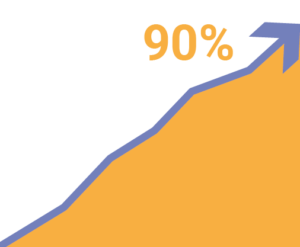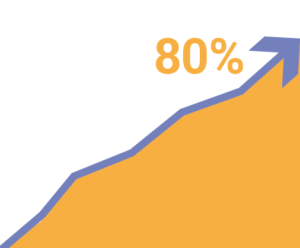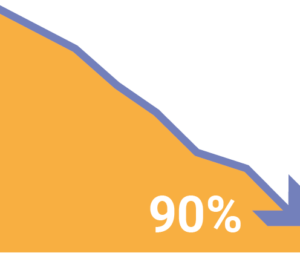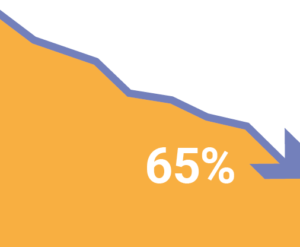TARGETS
INCREASE
DIAGNOSES

90% of people living with HCV will be diagnosed
INCREASE
TREATMENT

80% of people diagnosed with HCV will be treated or will have cleared infection
REDUCE NEW INFECTIONS

90% reduction in new HCV infections*
REDUCE
PREVALENCE

90% reduction in people living with HCV
DECREASE
DEATHS

65% reduction in liver related deaths
*New infections target was updated from 80% to 90% in 2024.
METRICS
To monitor progress on elimination targets, including reducing prevalence,Elimination is defined as a 90% reduction in HCV prevalence. Read more about the methods used to calculate prevalence.X the HCV Dashboard tracks three primary metrics: diagnoses, treatment, and new infections.
As the HCV Elimination plan and Dashboard evolve, various secondary metrics that highlight disparities in HCV risk and care will be developed and tracked.
MEASURING PREVALENCE
A vital step in designing and monitoring the success of the HCV Elimination plan is understanding the current burden of HCV infection in NYS — also known as the prevalence of current HCV infection in NYS. Annual prevalence estimates are adjusted in conjunction with the three primary metrics tracked annually — diagnoses, treatment, and new infections among PWID.
Estimating prevalence: Due to undiagnosed cases and missing data, among other factors, prevalence of HCV in NYS cannot be directly measured. Instead, a mathematical model developed by UAlbany School of Public Health (SPH) and the NYS Department of Health (DOH) AIDS Institute is used to estimate prevalence. This model integrates National Health and Nutrition Examination (NHANES) data with HCV case surveillance and mortality data from NYS and NYC and incorporates state-specific HCV testing data among persons in jails and prisons. This model provided a primary estimate of 114,000 (0.74%) adults infected with HCV infection throughout NYS in 2015. Using this primary estimate, the Center for Disease Analysis Foundation’s Polaris Observatory’s dynamic model of the HCV epidemic, described above in “Outcomes”, calculated a lower bound of 116,000 persons of all ages living with HCV in NYS in 2015.
Another model developed by Bocour et al. (2018) estimated the prevalence of HCV infection in NYC alone. To be scalable to all of NYS, this method requires data and assumptions that are currently unavailable. Nonetheless, using assumptions from earlier work conducted by NYS DOH, the UAlbany SPH model approximated this technique for all of NYS, yielding an estimate of between 168,000 – 200,000 HCV-infected adults. This estimate was used to choose 189,000 as an upper-bound prevalence among persons of all ages in NYS in 2015. These upper and lower bounds (116,000 – 189,000) of NYS HCV prevalence in 2015 inform NYS elimination planning, including the creation of the five elimination targets and the simulation model used for the cumulative outcomes, as detailed above.
NYS HCV ELIMINATION DATA AND METRICS ADVISORY COMMITTEE
The Advisory Committee was appointed to ensure scientific validity, clinical accuracy, cultural appropriateness, and feasibility of the approaches developed by the Surveillance, Data and Metrics Workgroup. The Committee also provides feedback on implementation plans, summary data, and the HCV Dashboard. The initial Advisory Committee included the following members:
Meredith Barranco
Debra Blog
Angelica Bocour
Don Des Jarlais
Elizabeth Dufort
Eliana Duncan
Colleen Flanigan
John Fuller
Annette Gaudino
Holly Hagan
Ingrid Hahn
David Holtgrave
Christine Kerr
John Leung
Wendy Levey
Denis Nash
Monica Parker
Daniel Raymond
Barbara Rogler
Eli Rosenberg
Elizabeth Rosenthal
Bruce Schackman
Sarah Shufelt
Patrick Sullivan
Tomoko Udo
Ronald Valdiserri
Larissa Wilberschied
Ann Winters
Lucila Zamboni

